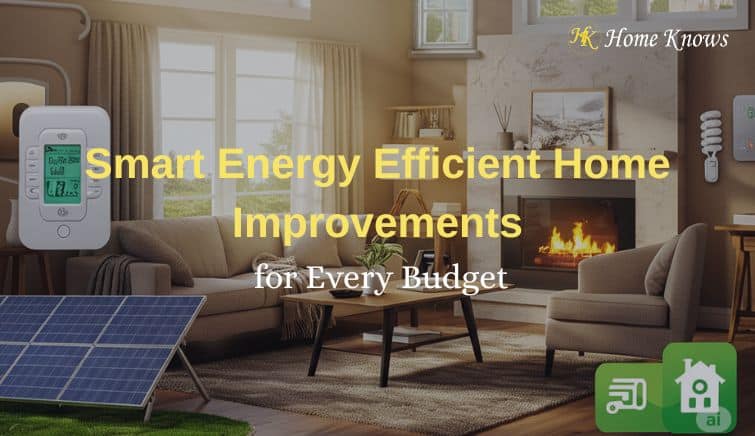Introduction
Smart Energy efficient home improvements are simple changes you can make to your house to use less energy. These upgrades help you save money on electricity bills, make your home more comfortable, and reduce your impact on the environment. The best part? You don’t need a big budget to start. Whether you can spend a little or a lot, there are smart ways to make your home more energy efficient.
Small fixes, like sealing drafts or switching to LED bulbs, cost almost nothing but make a big difference. If you have more to spend, you might consider better insulation, energy-saving appliances, or even solar panels. No matter what your budget is, there’s always a way to cut down on energy waste.
In this guide, we’ll cover:
- Why energy efficient home improvements matter
- Budget-friendly energy efficient home ideas
- Mid-range energy efficient home upgrades
- Bigger energy efficient home renovations for long-term savings
Let’s get started!
Why Energy Efficient Home Improvements Matter?
Making your home more energy efficient isn’t just about saving money—it’s about comfort, sustainability, and even increasing your home’s value. Here’s why these upgrades are worth it.
Save Electricity at Home and Cut Down Bills
Energy costs keep rising, but the good news is that small changes can lead to big savings.
- Switch to LED bulbs – They use up to 80% less energy than old incandescent bulbs and last years longer.
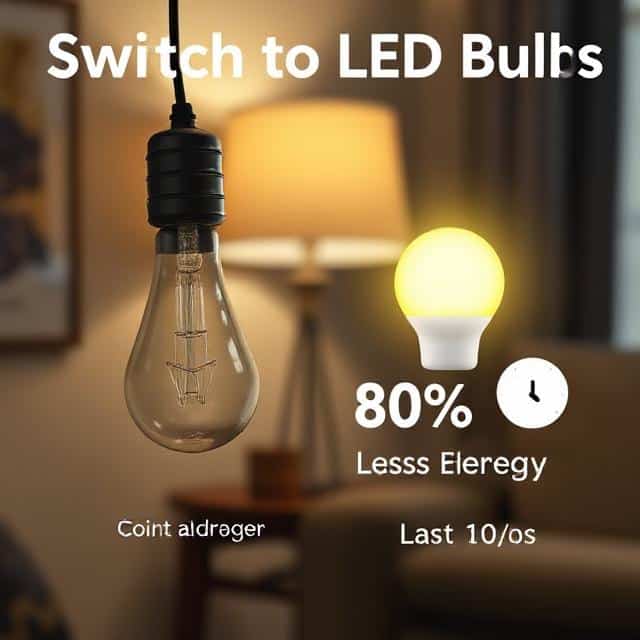
- Install a smart thermostat – It automatically adjusts heating and cooling when you’re not home, cutting wasted energy.
- Unplug unused devices – Many electronics drain power even when turned off. Using power strips can help.
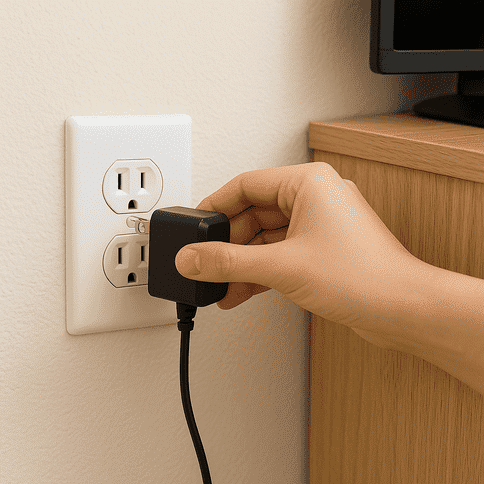
These simple energy-efficient home upgrades add up over time, keeping more money in your pocket and can even extend to spaces like your bathroom, where low-flow fixtures and LED lighting can make a big impact. Explore more eco-friendly bathroom ideas here.
Benefits Beyond Saving Money
Better Comfort
- Proper insulation and sealing drafts keep your home warmer in winter and cooler in summer.
- Energy-efficient windows reduce cold drafts and outside noise.
Help the Environment
- Green home improvements lower your carbon footprint by reducing energy waste.
- Using less electricity means fewer greenhouse gas emissions from power plants.
Increase in Home Value
- Buyers love energy efficient home renovations because they mean lower bills.
- Homes with energy-saving features often sell faster and at better prices.
By making these smart upgrades, you’ll enjoy a cozier home, lower bills, and a cleaner planet—all while adding value to your property.
Smart Energy Efficient Home Improvements for Every Budget
Making your home more energy efficient doesn’t have to be expensive. Whether you have a small budget or are ready for bigger investments, there are energy efficient home upgrades that can help you save electricity at home, lower bills, and live more comfortably.
Let’s explore the best energy efficient home ideas for every budget.
Low-Cost Energy Efficient Upgrades Anyone Can Do
You don’t need a lot of money to start making your home more energy efficient. These simple energy efficient upgrades can make a big difference in your energy bills and comfort.
- Weatherstripping Doors and Windows($10−$30 per door/window): Drafts around doors and windows let cold air in during winter and hot air in during summer, making your heating and cooling systems work harder.
- How to do it:
- Check for drafts by holding a candle near windows and doors—if the flame flickers, you have a leak.
- Apply self-adhesive weatherstripping tape around doors and windows.
- Use door sweeps to block gaps under exterior doors.
- Savings: Can cut heating/cooling costs by 10–20%.
- Installing LED Lights and Smart Power Strips ($2 – $10 / Bulb)
Old incandescent bulbs waste a lot of energy as heat. Switching to LEDs is one of the easiest energy efficient home ideas.
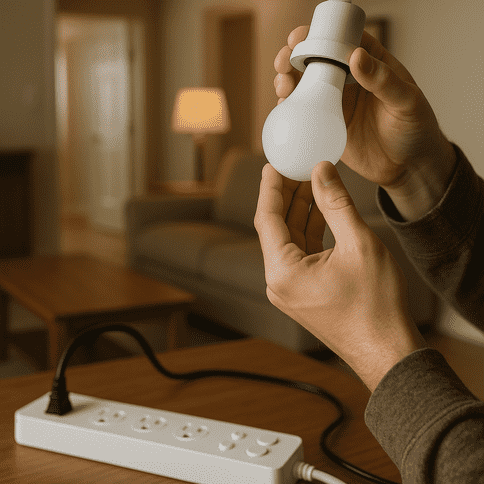
- Why LEDs?
- Use 75% less energy than incandescent bulbs.
- Last up to 25 times longer.
- Smart power strips:
- Many devices (like TVs and chargers) still use power when turned off (“phantom load”).
- Smart power strips cut power when devices aren’t in use.
- Savings: Switching to LEDs can save $75+ per year on lighting.
- Sealing Air Leaks ($5–$20 for sealants)
Small gaps in walls, floors, and ceilings let air escape, making your HVAC system work harder.
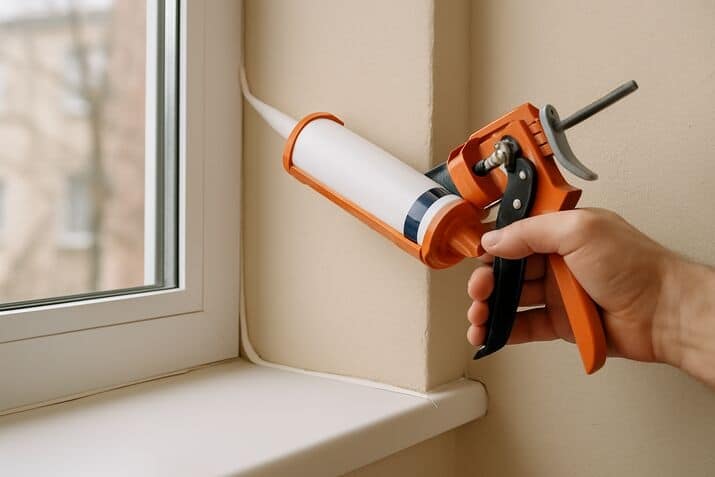
- Common leak spots:
- Around pipes, vents, and electrical outlets.
- Baseboards and attic hatches.
- How to fix it:
- Use caulk for small cracks.
- Apply spray foam for larger gaps.
- Savings: Can reduce energy bills by 10–15%.
These energy efficient upgrades are cheap, easy, and can be done in a weekend.
If you have an open kitchen in your home, sealing leaks around kitchen windows and exhaust ducts is also essential for efficient energy use. Check out some open kitchen design ideas for small houses that combine style with energy-conscious layouts.
Bigger Energy Efficient Home Upgrades for Long-Term Benefits
If you’re ready to invest more, these energy efficient home renovations will save you even more money over time while improving comfort.
- Adding Insulation – Attic, Walls, Floors ($500–$2,500 [depending on area])
Poor insulation is a major cause of energy waste. Upgrading it keeps your home warmer in winter and cooler in summer.
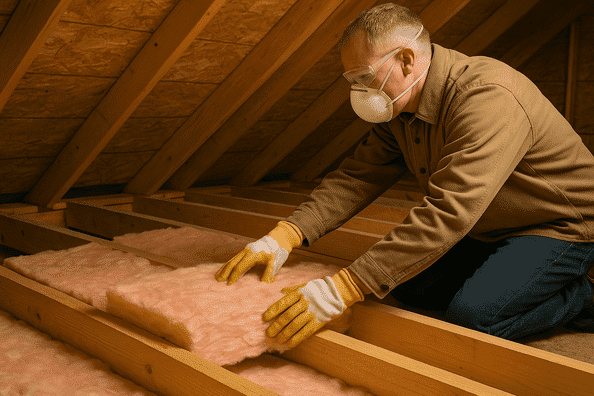
- Best places to insulate:
- Attic: Heat rises, so good attic insulation prevents warm air from escaping.
- Walls: Especially in older homes with little or no insulation.
- Floors: Helps if you have cold floors in winter.
- Types of insulation:
- Fiberglass batts (easy DIY).
- Spray foam (better for sealing gaps).
- Blown-in cellulose (good for attics).
- Savings: Can cut heating/cooling costs by 20–30%.
- Upgrading to Energy-Efficient Appliances($500–$2,000 per appliance)
Old appliances waste a lot of electricity. ENERGY STAR-rated models use much less power.
- Best appliances to upgrade:
- Refrigerator (uses the most energy in the kitchen).
- Washing machine (new models use less water and power).
- Dishwasher (ENERGY STAR models save water and energy).
- Savings: An efficient fridge can save $100+ per year.
If you’re replacing cleaning appliances, consider a canister vacuum cleaner for its powerful suction and energy-efficient design, especially on carpeted areas.
- Installing a Programmable or Smart Thermostat($100–$250)
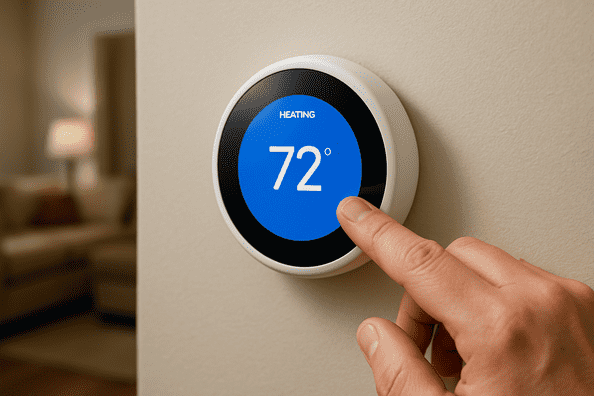
Heating and cooling make up nearly half of home energy use. A smart thermostat optimizes temperatures automatically.
- How it helps:
- Learn your schedule and adjust temps when you’re away.
- Can be controlled remotely via smartphone.
- Savings: Can reduce HVAC costs by 10–15%.
- Replacing Old Windows with Energy-Efficient Models (300–1,000 per window)
Single-pane windows let heat escape easily. Double or triple-pane windows keep your home better insulated.
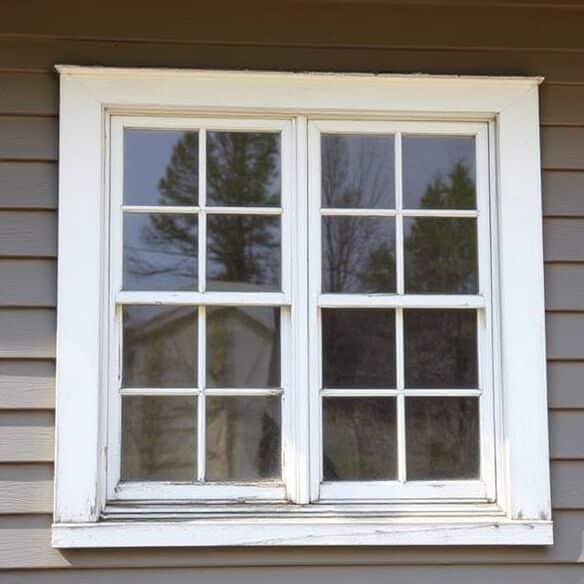
- Best options:
- Double-pane windows with Low-E coating (blocks UV rays).
- Gas-filled windows (argon or krypton between panes for better insulation).
- Savings: Can cut energy loss by 30–50%.
As you redesign windows, consider upgrading your ceiling as well—modern ceiling designs not only improve aesthetics but also support better insulation and airflow. Explore top ceiling design ideas that can contribute to your home’s overall energy performance.
Conclusion: Make Green Home Improvements at Your Own Pace
Smart Energy efficient home improvements don’t have to be expensive or done all at once. Start with small changes like using LED bulbs or sealing windows. Over time, you can move to bigger upgrades like better insulation or smart thermostats. Every step, big or small, helps you save money and use less energy.
These green changes also make your home more comfortable and better for the environment. Remember, energy efficient home improvements are possible for every budget—just take it one step at a time!

